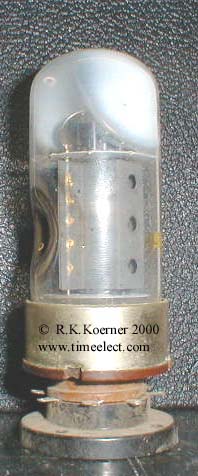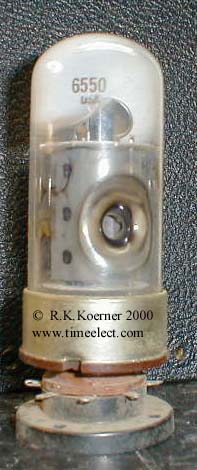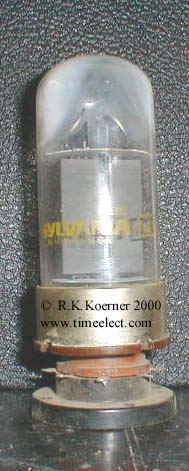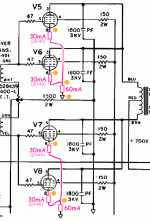no your thinking of the PS400 the PS 300 has only 4 output tubes.
thanks for confirming my thinking but just to be sure kt88's are listed as 800 volt max for the plate?
these amps call for 6550 A's and most spec sheets i've looked at show 6550 max plate as 600 volt while 6550 A's are indeed 800 volt.
i can get NOS Tung Sol 6550 A's but they are almost 200 bucks a pop! so if KT's will work those are more readily available at a more reasonable price.
thanks for confirming my thinking but just to be sure kt88's are listed as 800 volt max for the plate?
these amps call for 6550 A's and most spec sheets i've looked at show 6550 max plate as 600 volt while 6550 A's are indeed 800 volt.
i can get NOS Tung Sol 6550 A's but they are almost 200 bucks a pop! so if KT's will work those are more readily available at a more reasonable price.
yes i have the schematic for it and no i have not contacted Fender directly, i should.
being such an old uncommon model i figured i would have to query "old" amp tech's for info.
being that it's the cathode that's biased this is a little unfamiliar to me so i'm just getting all the info i can so i don't inadvertently mess things up.
being such an old uncommon model i figured i would have to query "old" amp tech's for info.
being that it's the cathode that's biased this is a little unfamiliar to me so i'm just getting all the info i can so i don't inadvertently mess things up.
I was kinda hinting that if you had a schematic, maybe you could post it so we could follow along at home. For Fender amps I think the schematic usually has enough information to bias it the way they did. Modern day techs want to get all precision with bias, and shoot for XX% dissipation etc. Back then it was usually "set if for -50v".
Bias is bias, the difference in voltage between grid and cathode. It doesn;t really matter if some of that voltage comes from a cathode resistor. The amp has the cathode resistor, but also a negative bias supply, which is adjustable.
Bias is bias, the difference in voltage between grid and cathode. It doesn;t really matter if some of that voltage comes from a cathode resistor. The amp has the cathode resistor, but also a negative bias supply, which is adjustable.
There are not 30 steps to adjust the bias. If you break the connection (Red wire) from the output transformer, place a milliamp meter in series with the red wire allowing current measurement of the output valves. Turn the bias pot to maximum voltage, (minimum resistance), set bias balance pot centre and ensure distortion is set to off. Power up the amplifier and you are looking for about 80mA current. Adjust accordingly. Now when you are happy with the current drawn, check for any issues then power off the amplifier. Wait a couple of minutes for the 700V DC to die down. Disconnect the test meter, reconnect the red wire. Power up and listen to the speakers at minimum volume. Adjust the balance pot for minimal hum. That's it. If you want a more Marshall sound, use 40mA. A smoother wear your valves out quickly sound, use 100mA. 6550 or KT88 is fine, you can even get away with 807s if you make an adaptor. EL34 will die quite quickly. 6L6GC does well as does the Russian 6n3c-EV Have fun.
There is a 30 step factory setup procedure that requires specific test equipment. Without this, things like this are guaranteed to happen.
The "Only" Problem with this 400-PS was a combination of User and Amp Tech Errors.



when researching this amp i came across this so just want to be sure.
The "Only" Problem with this 400-PS was a combination of User and Amp Tech Errors.



when researching this amp i came across this so just want to be sure.
KT88 is nearly the same tube, rated 800V, though the bottle is taller.
I think many new 6550 will stand 700V idle.
IMHO, this amp needs cathode current monitor resistors. Snip the path pin 8 to ground. Insert resistors as shown. Test-points are handy to mount the resistors and for your meter. 1 Ohms is now traditional and simplifies math: 30mV is 30mA. 10 Ohms used to be standard when needle-meters did not resolve 30mV well; 300mV or 0.3V is 30mA. Neither will affect tube operation (internal cathode resistance is over 100r).
If this is not clear, don't mess around with this over-hot-rod amp. If Time Electronic is still in business, they can handle it.
I think many new 6550 will stand 700V idle.
IMHO, this amp needs cathode current monitor resistors. Snip the path pin 8 to ground. Insert resistors as shown. Test-points are handy to mount the resistors and for your meter. 1 Ohms is now traditional and simplifies math: 30mV is 30mA. 10 Ohms used to be standard when needle-meters did not resolve 30mV well; 300mV or 0.3V is 30mA. Neither will affect tube operation (internal cathode resistance is over 100r).
If this is not clear, don't mess around with this over-hot-rod amp. If Time Electronic is still in business, they can handle it.
Enzo so as long as i keep current through the tubes at a reasonable level things should be alright ?
i'm not sure what kind of current draw to be looking for.
PRR i have considered cathode current resistors. with this amp there is a control that effects/changes current draw to the positive and negative halves of the output and a means to check this would be valuable. i'm curious to know how one would check this otherwise, shunt measurement?
i'm not sure what kind of current draw to be looking for.
PRR i have considered cathode current resistors. with this amp there is a control that effects/changes current draw to the positive and negative halves of the output and a means to check this would be valuable. i'm curious to know how one would check this otherwise, shunt measurement?
do i really need six resistors and not just four?
Not if you can do math.
My math says that $0.30 once is better than doing math every time the amp needs bias-check.
Actually I am suggesting $10 of tip-jacks so you don't stick your hand inside the chassis. $10 is less than a heart-operation.
But if your PS300 is not worth $10, do whatever you want.
resistors jacks
- Status
- This old topic is closed. If you want to reopen this topic, contact a moderator using the "Report Post" button.
- Home
- Live Sound
- Instruments and Amps
- Fender PS300
